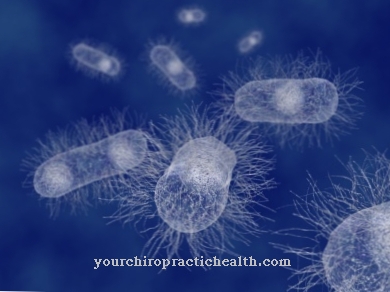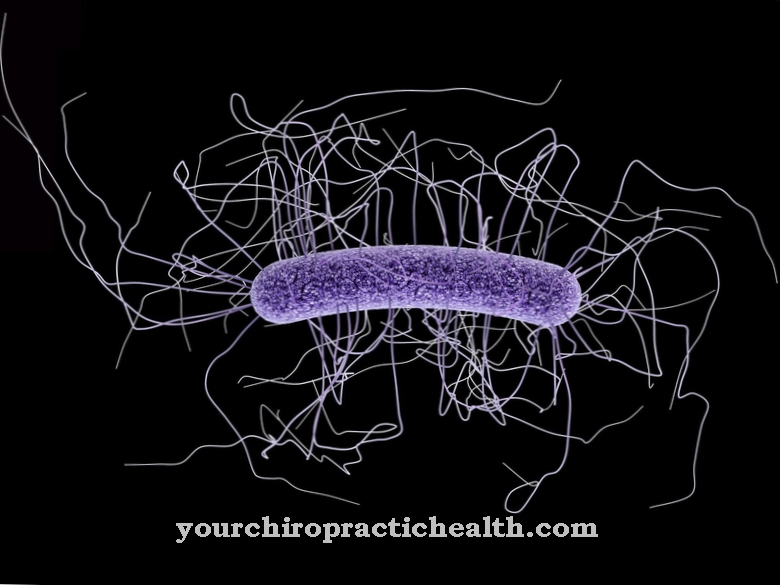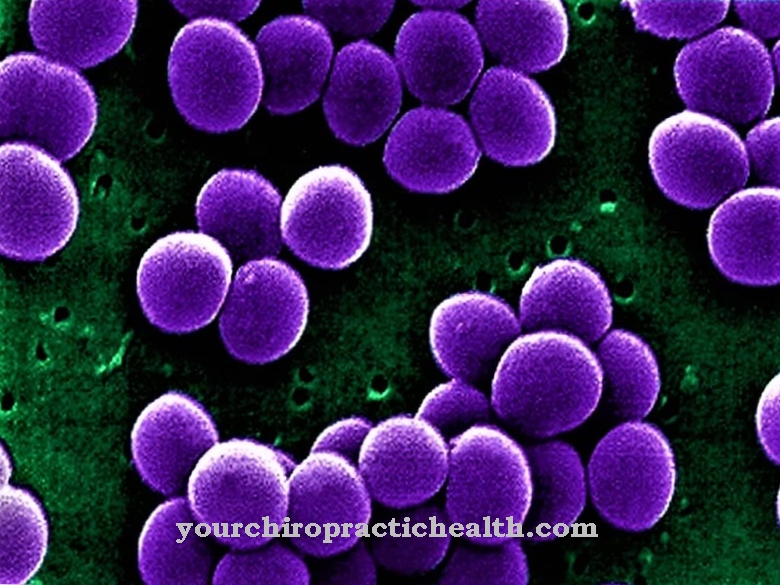Parasite infestation in the form of worms, which come in many different types, is quite common. Worldwide, around two billion people are said to be affected. The WHO estimates that around 200,000 people die from the parasites every year. The most common types of worms are the tapeworm, roundworm and pinworm. Sometimes they are not noticed at all or very late.
Sources of infection

Contaminated food and foods and the consumption of raw or undercooked meat are the main sources of infection.
However, this can also be done via various other objects such as animals, doorknobs and toys or the air. In this way, the eggs of the microorganisms get into the human body. They settle in the intestine and feed on the food pulp. After about six to eight weeks, the parasites have developed into sexually mature worms.
Symptoms of worm infestation
Signs of worms in the intestines can include stomach pain, vomiting, a mild fever, nausea, and watery diarrhea. Since these complaints are also symptoms of countless diseases, they do not always immediately suspect doctors of worm infestation. Some of the clearer signs include:
- Itching of the buttocks, especially in the evening and at night
- Loss of appetite for no apparent reason
- Weight loss without diet changes or the like
Only if worms or their eggs are spotted in the feces is an infestation 100 percent certain. Younger children are the most easily infected, especially if they put their fingers in their mouths frequently, for example when sucking their thumbs.
Detection of worms in the intestines by the doctor

As a rule, if a worm infestation is suspected, a doctor will request a fecal sample. A blood test for an increase in eosinophilic granulocytes can also be done. For example, the fox tapeworm is detected in 85 percent of affected people via antibodies in the blood. One easy way to identify roundworm eggs is to temporarily place an adhesive tape around the anus. These stick to it and can be discovered by the doctor under the microscope.
Different types of worms
Pinworms: Like trichinae and roundworms, they belong to the group of roundworms. The latter are also widespread in Germany. Pinworms are up to twelve millimeters long and settle in the small and large intestines and the appendix. This species of worm lays its eggs around the anus at night, causing the frequent itching in the late evening hours. Often those affected scratch themselves and objects are touched immediately after getting up. In this way, pinworms spread quickly through the family. The initial intake usually takes place via contaminated vegetables.
Beef and pork tapeworm: Infection mainly takes place through the consumption of raw or undercooked meat, whereby the larvae of the worms are ingested. In the intestine they mature into a complete parasite with head, neck and limbs. Since only the latter are excreted in the stool, this type of tapeworm is rarely discovered there. This makes diagnosis difficult, as does very little evidence of the infestation. The suspicion of a tapeworm infestation increases, for example, if loss of appetite alternates with cravings and weight loss is noticeable despite regular eating.
Dog / fox tapeworm: They are among the most dangerous parasites in a person's body. The eggs can be ingested through contact with infected cats, dogs, and foxes. In addition, if unwashed forest fruits contaminated with fox excrement are eaten. The development of the dog or fox tapeworm eggs into larvae takes place in the intestine. From there they can reach organs such as the liver or lungs via the blood vessels. The incubation period ranges from a few weeks to several years.
Flukes: Although they occur particularly in Africa, South America and Asia, they often come to Europe through holidaymakers. Their larvae develop in freshwater snails, which are found in rivers, lakes and puddles. They reach the liver through human skin, where they mature. From there they migrate to the intestines or the bladder. The flukes lay their eggs in these organs. They find their way into our waters through urine and stool and cause new infections.
When pinworms affect children

Experts estimate that half of all people will be attacked by the parasites at least once in their life.
It affects children between the ages of five and ten years particularly often (see also: worms in stool in children). If worms are not diagnosed for a longer period of time, other family members are often infected.
Our youngest are infected in public sandpits, through toys or food, among other places. The worm eggs quickly enter the intestine via the mouth. There worms with a length of about three to twelve millimeters develop in the mucous membranes.
In addition to the previously mentioned itchy anus, affected children sometimes show up
- unfocused,
- sleepless,
- in a bad mood and
- tearful.
Serious problems are extremely rare. Nevertheless, worm infestation is a taboo subject in Germany that people are reluctant to talk about. The illness does not have to be reported. In a household, the eggs can stick to house dust, clothes, or sheets. They are viable outside the body for about 20 days.
Since our youngest often infect themselves again and again, strict hygiene measures must be observed. That goes for the whole family. Regular hand washing with soap is just as important as clipping your fingernails. In addition, underclothes and bed linen should be changed daily.
Which doctor is responsible?
The family doctor is responsible if a worm infestation is suspected. In principle, every general practitioner is able to make the diagnosis and to indicate the necessary medication taking into account age, pregnancy or breastfeeding period. The majority of medicines require a prescription, mostly an anthelmintic (worming agent) is prescribed. It poisons the parasites and ensures that they are excreted. In general, the treatment should be repeated over several weeks because the worm poison does not kill the larvae.
Anyone infected with parasites from the tropics should consult a special institute for tropical and infectious diseases in consultation with their family doctor to be on the safe side. Some types of worms settle under the skin. In this case, a surgeon or dermatologist can remove the microorganisms. The former is also responsible if, for example, there are dog tapeworm foci in the body that need to be removed. If parasites have lodged in the eye, the ophthalmologist can help.
Home remedies for worms
There are some vegetables and fruits that naturally help drive the parasites away. Natural remedies are particularly useful as an accompaniment to drug treatment. Raw garlic with its sulfur-containing amino acids helps to drive away worms in the intestine.
The same applies to grapefruit seed extract, which, however, is not suitable for small children, breastfeeding and expectant mothers. Fresh carrots, which are high in beta-carotene, help kill the eggs. The very unpleasant itching on the anus can be alleviated by bathing in salt water. Rubbing in with Vaseline, which is odorless and insoluble in water, also reduces the annoying side effect.

















.jpg)



.jpg)

.jpg)




